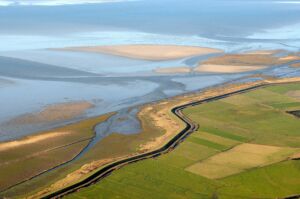News
Denmark committed to protecting 30 percent of the world’s nature, but can’t even manage 3 percent of its own
This article is more than 2 years old.
Damning reports draws attention to country’s falling biodiversity levels and failure, at either a governmental or municipal level, to offer permanent protection to its own wilderness areas

The view from the plane as it enters Denmark can be a little misleading (photo: NPV_John Frikke)
Denmark might look like a relatively green country from the air, but it is not famous for its nature. For every Wadden Sea area, there are a thousand fields growing crops to feed pigs.
Reports vary, but between 59 and 65 percent of the country is used for agricultural purposes – making it one of the world’s leaders in the field.
According to the EU’s Natura 2000 guidelines, just 8 percent of Denmark’s total land is protected, compared to a EU average of 18 percent.
READ ALSO: Denmark scraping the bottom in terms of nature conservation
Ironic pledge surely?
It was with some irony therefore that Denmark joined 194 other countries in signing a pledge at a summit in Canada last year to ensure that 30 percent of the world’s nature must be permanently protected by 2030.
A damning story in DR yesterday, citing a recent report by Biodiversitetsrådet, suggests that only 2.3 percent of Denmark’s nature can live up to that goal – partly because many areas exist with a clause that they could be used for agricultural or forestry purposes if need be.
Denmark has already lost, or is on the verge of losing, a fifth of all its species of animals, plants and fungi.
More action urged from government and municipalities
According to Biodiversitetsrådet head Signe Normand, not enough is being done: either by the government with its efforts to introduce more national parks, or the municipalities with their more local efforts to generate more biodiversity.
“The projects in the municipalities contribute, of course, but it is not enough to reverse the loss of biodiversity in Denmark. A much higher share of Danish land needs to be reserved for nature,” she told DR.
Efforts to resurrect former springs, swamps and even lakes – like the 660-acre Søborg Lake in northern Zealand – are ongoing, but municipalities association KL concurs that it is “not good enough” and difficult when there is so much demand for land – for example, from alternative energy suppliers.
Just recently, the government opposed EU legislation to protect 20 percent of all nature, arguing that provisions for agriculture and renewable energy must be taken into account in any new laws.
READ MORE: Government to re-establish historic lake in north Zealand










































